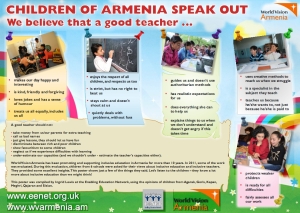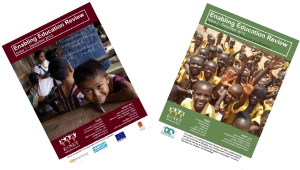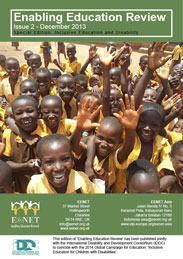When I talk to teachers about including disabled children, we always get stuck on testing. In many countries there is a tough and inflexible exam at the end of primary school, for admission to secondary school. Disabled children are usually not entered for this exam. This may be because no one has considered how a child who can’t write can take the test, or because people think a disabled child is not capable of learning. Where disabled students have managed to make it to secondary school, they often find themselves with the same problem – no chance of taking formal exams at the end.
Many teachers worry whether it’s worth keeping children in primary school if they have no chance of passing exams. Some teachers will keep disabled children in lower primary for years in the hope of providing some learning, but parents can become frustrated at the lack of qualifications. Sometimes head teachers don’t want to enter disabled children for exams because they worry about bringing the school’s results down; but often it’s felt to be unfair to put a child through tests set up for them to fail.
I try to encourage discussion of alternative ways to test a child’s knowledge. If a child writes slowly, why not give extra time? If a child can’t see, why not read the questions and write the answers for them? Teachers are often enthusiastic, and discussing inclusive assessment can reframe the problem from ‘disabled children can’t learn’, to ‘disabled children’s knowledge isn’t captured well’. However, no matter how positive a teacher’s attitude, teachers rarely have the power to decide how formal testing works.
Many questions come up about making testing systems inclusive. Who will be running the exam? Is there any law or policy which requires adaptations? How should concerns about cheating be dealt with? (For example, if a child has to give their answers verbally, should the recorder be observed? What will it cost to provide two extra people to test one child?) How much extra exam time does each child need? What if a child doesn’t understand the language the exam is written in – is that an accessibility question or a wider policy issue? How can marks be given fairly if testing is done in different ways for different children?
The same questions apply to the large learning outcomes surveys used to show the impact of donor-funded projects. This provides a huge disincentive to include disabled children in education programmes. Why would the implementing agency bring children into a project who can’t participate in testing, when this will reduce the final averaged scores? If surveys are designed from baseline stage to be inclusive, this can be avoided, but it’s rare. This in turn makes it difficult to agree what types of adaptations meet international standards for learning outcomes testing.
All these issues can be dealt with, and there is some useful experience on what has been tried in the past. (Please comment below on what has worked for you!) But inclusive testing also needs new types of advocacy. The people who work as examination developers and learning outcomes experts are often not based in the front line of teaching, and come under pressure to make testing as rigorous as possible. Efforts to make testing equitable can be seen as attempts to reduce standards.
There is little research on the extent to which inaccessible testing pushes disabled children out of school. However, my experience has made me feel that education programmes should tackle testing at the start, rather than realising too late how much it damages equity and inclusion. This would mean building relationships with new groups of people, and having discussions about inclusion and education rights from different perspectives. Where once the question was, ‘How can we get all children into school?’, it’s fast becoming, ‘How can we make sure that enrolment leads to a worthwhile education for everyone?’
Helen Pinnock
Senior EENET Consultant



